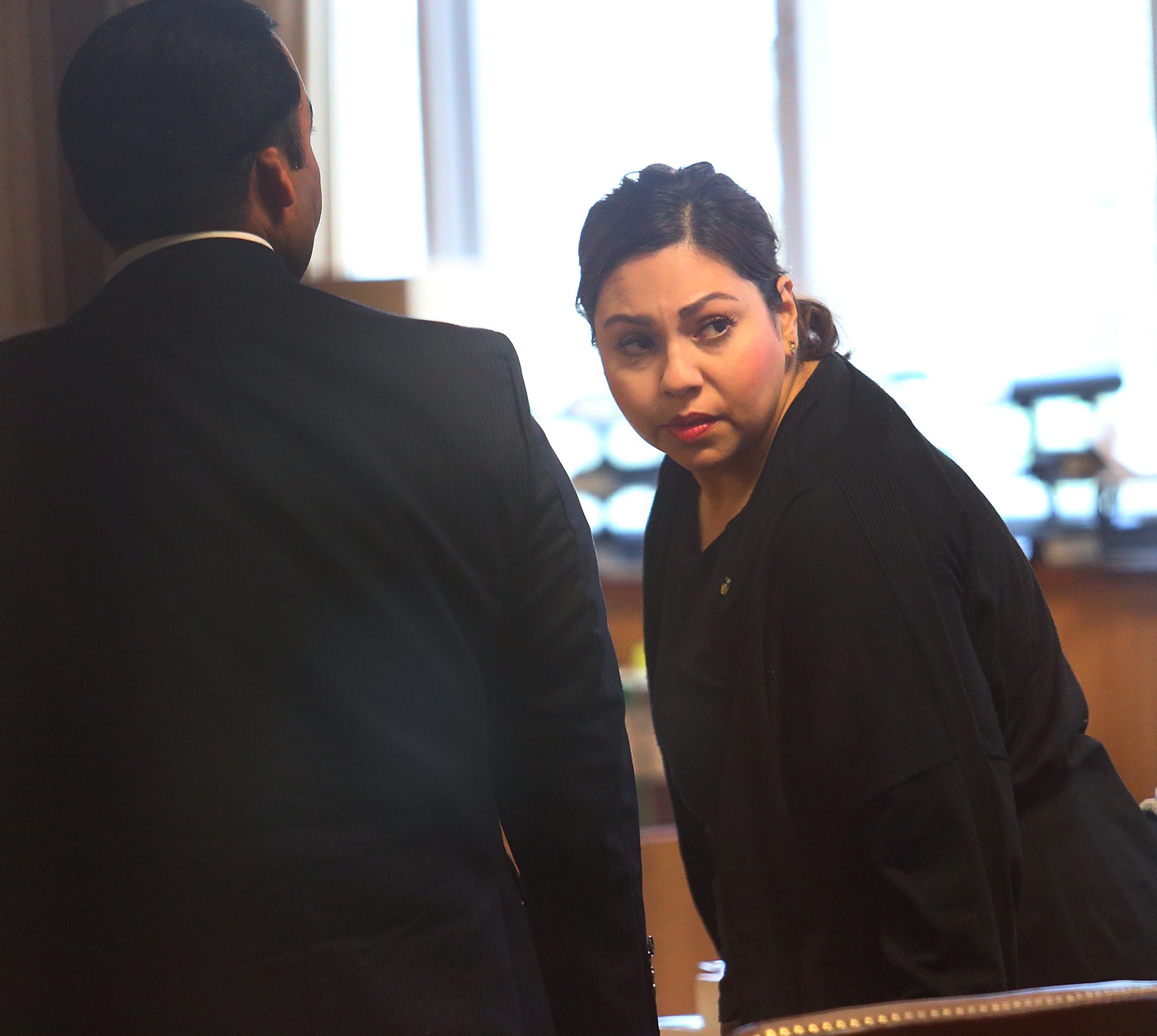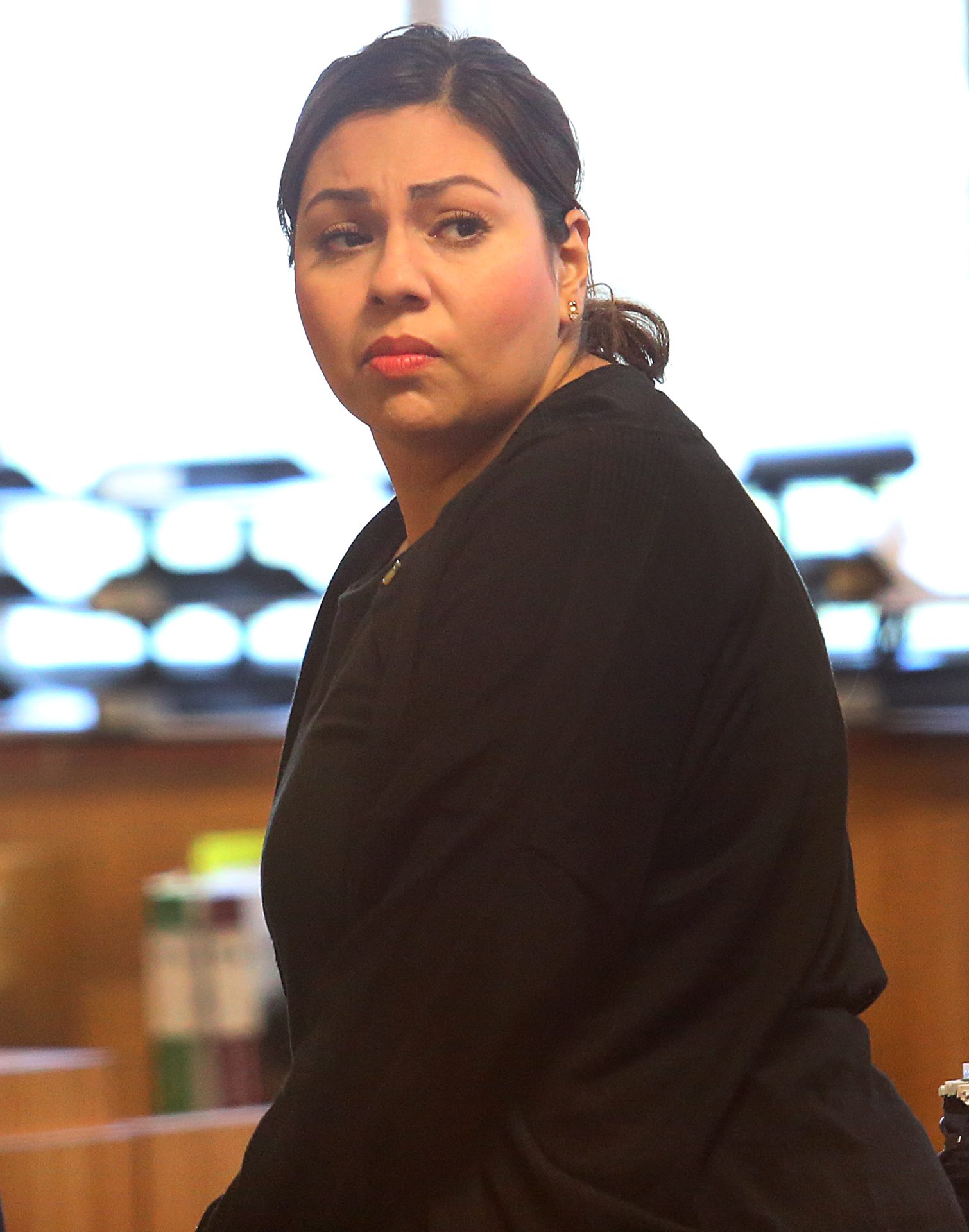|
Only have a minute? Listen instead
Getting your Trinity Audio player ready...
|

EDINBURG — An autopsy report shown Tuesday revealed that the gun used to shoot and kill a 31-year-old man in his Edinburg apartment was fired at either point blank range or very close to the base of his skull, according to a forensic pathologist.
The deceased, Craig Chastain, was recently married to 38-year-old Lucinda Diaz, of Elsa, who is accused of murdering her husband, though she’s remained adamant of her innocence since the death of Chastain and claims he killed himself.
On Tuesday, the second day of Diaz’s trial, the jury heard testimony from forensic pathologist Ray Fernandez who conducted the autopsy on Chastain.
Photos of the autopsy show a darkened ring around the gunshot wound, which indicates that the gun was at point blank range or close to it.
Fernandez testified that Chastain was six-feet, four-inches tall while Diaz is only five-feet, two-inches tall, according to jail records.
Diaz’s defense attorney, Juan Tijerina, argued that if Diaz had shot Chastain in the back of his head, the trajectory of the bullet would be at a higher upper angle to which Fernandez agreed.
However, Fernandez testified that the trajectory of the bullet was at a slight “upper” angle and a bullet fragment was found in the front, right-side of the skull.
The bullet wound Chastain sustained was at the “mid-lower back of the head.”
Fernandez said that he’s conducted around a thousand autopsies on suicide victims who used a gun as a means to kill themselves and they generally shoot themselves in the chest area, their mouth, side of the head or under their jaw.
He’s never seen someone shoot themselves in the back of the head.
Fernandez also testified that one of Diaz’s hands had blood splatter on its thumb, though the gun didn’t have any blood on it when it was recovered.

When Tijerina reminded Fernandez of the water at the scene, the pathologist agreed that the water could’ve possibly washed any blood splatter that might’ve landed on Chastain’s hand.
Forensic chemist Thomas White testified that he tested for gunshot residue and concluded that Diaz’s hands were free of any residue.
He also testified that residue can be easily “removed.”
White said that four hours of regular physical activity can cause the residue to fall off.
He added that they don’t conduct tests for gunshot residue taken from shooting victims as they generally have residue on their body, so they didn’t test Chastain.
DNA testing of the gun revealed that both Chastain and Diaz’s DNA was on the gun, though Chastain’s DNA was far more present than Diaz’s.
Forensic scientist Alejandro Vasquez testified that it’s possible Diaz’s DNA transferred from Chastain’s hands.
The jury also heard from investigator Albert Alvarez from the Edinburg Police Department, who took the gunshot residue swabs from Diaz and Chastain and who collected a substantial amount of evidence at the scene earlier that morning.
It’s uncertain when the trial will continue as Hidalgo County Official announced Tuesday afternoon that the courthouse will be closed Wednesday because its air-conditioning is not working.
PREVIOUS COVERAGE:
Edinburg woman’s trial over allegations she killed newlywed husband underway



